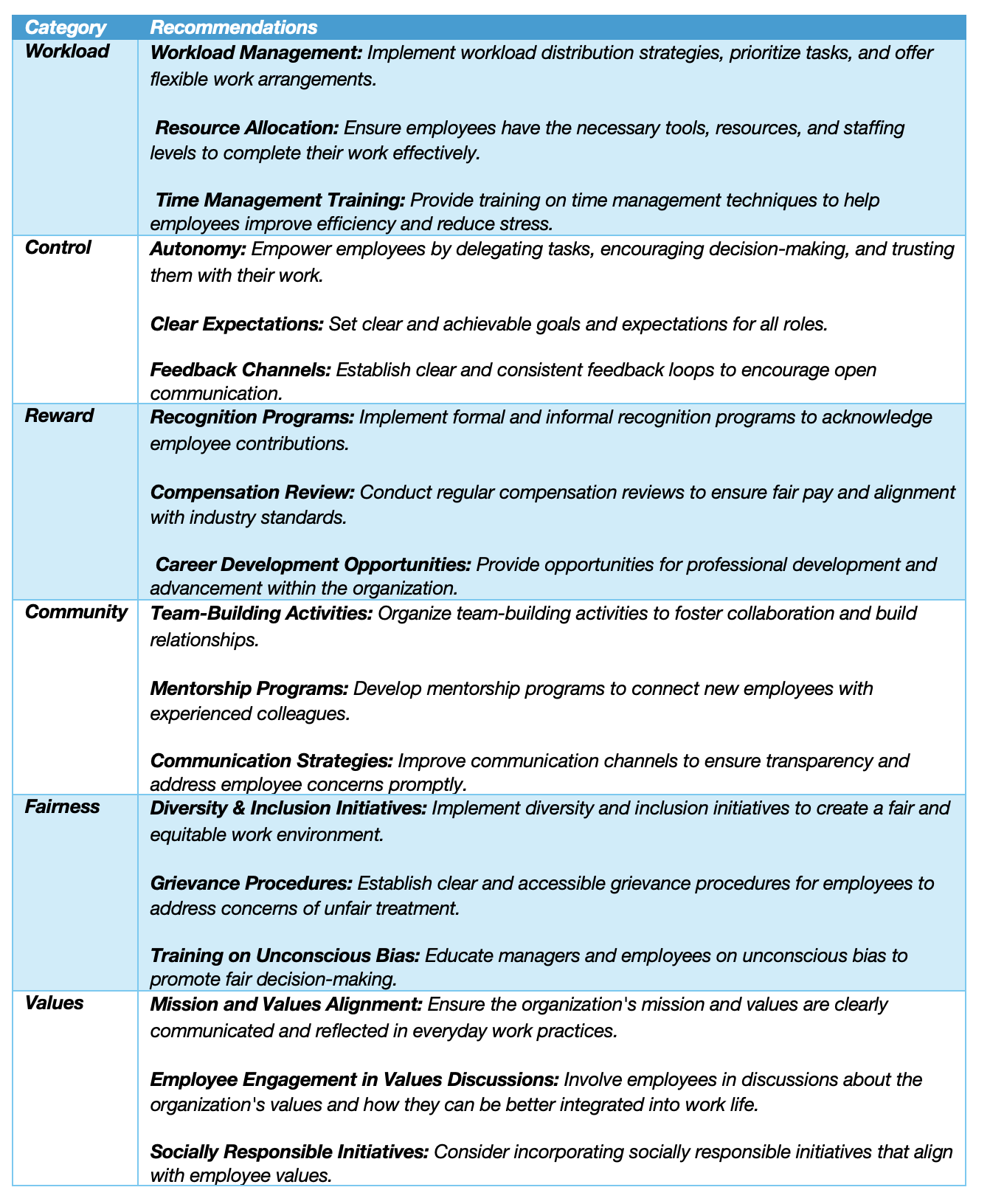Identifying Workplace Burnout with Christina Maslach's Areas of Work-Life Assessment
Employee burnout is a significant concern in today's workplace, leading to decreased productivity, increased absenteeism, and high turnover. To effectively address burnout, it's crucial to identify its root causes. Christina Maslach's Areas of Work-Life (AWS) assessment provides a valuable framework for understanding the six key areas that contribute to burnout. This assessment helps organizations identify potential issues and implement strategies to foster a healthier work environment.
The Six Areas of Work-Life:
Workload: This area focuses on the perceived balance between the demands of the job and the employee's capacity to handle them. Keywords associated with high workload and potential burnout include feeling overwhelmed, swamped, behind schedule, and struggling to meet deadlines.
Control: This area assesses the level of autonomy and decision-making authority employees feel they have in their work. Employees who experience micromanagement, lack of autonomy, or unclear expectations might feel helpless, trapped, and frustrated, contributing to burnout.
Reward: This area examines the employee's perception of recognition, appreciation, and compensation for their work. Feeling underappreciated, unrecognized, or unfairly compensated can lead to resentment, bitterness, and a sense that their contributions are not valued.
Community: This area focuses on the quality of relationships and sense of belonging employees experience within their teams. Feeling isolated, unsupported, or ostracized can significantly impact well-being. Keywords like poor communication, lack of collaboration, and dysfunctional team dynamics are red flags.
Fairness: This area assesses the employee's perception of equitable treatment and opportunity within the organization. Unfair treatment, discrimination, and favoritism can lead to anger, frustration, and feelings of being undervalued.
Values: This area explores the alignment between an employee's personal values and the organization's mission, ethics, and social responsibility. Feeling conflicted or disillusioned because their work doesn't align with their values can lead to a sense of meaninglessness and dissatisfaction.
By evaluating these six areas, the AWS assessment helps organizations identify potential sources of burnout before they escalate. This allows for proactive measures like workload adjustments, increased autonomy, improved recognition programs, team-building initiatives, and fostering a culture of fairness and shared values.
Benefits of using the AWS Assessment:
Early Identification of Burnout Risk: By pinpointing areas of dissatisfaction, organizations can address issues before they lead to full-blown burnout.
Improved Employee Well-being: Addressing the root causes of burnout helps create a more positive and supportive work environment.
Increased Retention Rates: When employees feel valued, empowered, and aligned with the organization's mission, they are more likely to stay.
Enhanced Productivity & Engagement: A healthier work environment leads to increased employee engagement and ultimately, higher productivity.
The AWS assessment is a valuable tool for organizations seeking to create a thriving workplace and reduce employee burnout. By proactively addressing these six key areas of work life, organizations can foster a culture of well-being, leading to happier, more productive employees.
Recommendations for Maslach's Areas of Work-Life Survey
Suggested Training
Prevent Burnout as a Manager
Burnout is a serious issue affecting the global workforce. Consequences of not addressing burnout on your team are lower productivity, unmet business goals, and increased attrition. More importantly, unmanaged burnout can lead to exhaustion, anxiety, and depression, and put employees at risk of serious health outcomes. If managers want healthier and higher-performing teams, they must be armed with the tools to assess and prevent burnout. In this course, best-selling author and workplace well-being expert Jennifer Moss teaches managers and people leaders of all levels how to accurately define burnout and its six root causes. She explains how to assess the signs of burnout in themselves and others and implement practical and easy-to-operationalize tactics to decrease burnout. Jennifer also covers the necessary steps to develop an ongoing culture of burnout prevention needed to create happier, healthier, and more productive teams.
Learning objectives
Identify the reasons that employees experience a perceived lack of control at work.
Describe the benefits of recognition in the workplace.
List tips that will help prevent meeting fatigue.
Explain ways that managers can encourage their teams to feel comfortable speaking up.
Recognize how managers can help employees prioritize self-care.
